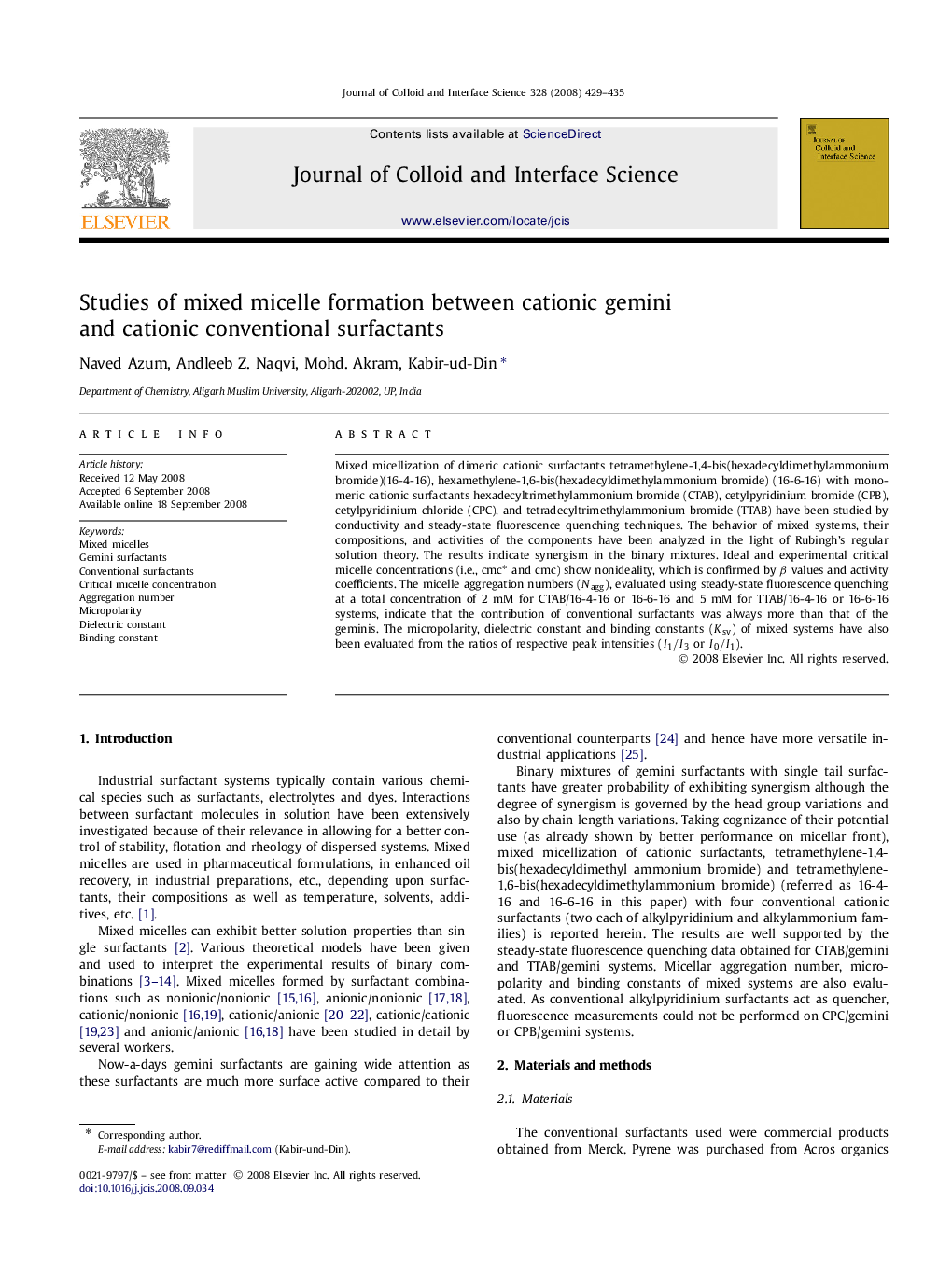| Article ID | Journal | Published Year | Pages | File Type |
|---|---|---|---|---|
| 611028 | Journal of Colloid and Interface Science | 2008 | 7 Pages |
Mixed micellization of dimeric cationic surfactants tetramethylene-1,4-bis(hexadecyldimethylammonium bromide)(16-4-16), hexamethylene-1,6-bis(hexadecyldimethylammonium bromide) (16-6-16) with monomeric cationic surfactants hexadecyltrimethylammonium bromide (CTAB), cetylpyridinium bromide (CPB), cetylpyridinium chloride (CPC), and tetradecyltrimethylammonium bromide (TTAB) have been studied by conductivity and steady-state fluorescence quenching techniques. The behavior of mixed systems, their compositions, and activities of the components have been analyzed in the light of Rubingh's regular solution theory. The results indicate synergism in the binary mixtures. Ideal and experimental critical micelle concentrations (i.e., cmc∗ and cmc) show nonideality, which is confirmed by β values and activity coefficients. The micelle aggregation numbers (Nagg), evaluated using steady-state fluorescence quenching at a total concentration of 2 mM for CTAB/16-4-16 or 16-6-16 and 5 mM for TTAB/16-4-16 or 16-6-16 systems, indicate that the contribution of conventional surfactants was always more than that of the geminis. The micropolarity, dielectric constant and binding constants (Ksv) of mixed systems have also been evaluated from the ratios of respective peak intensities (I1/I3I1/I3 or I0/I1I0/I1).
Graphical abstractMixed micellization of two dimeric cationic surfactants with four monomeric cationic surfactants has been studied by conductivity and steady-state fluorescence quenching techniques.Figure optionsDownload full-size imageDownload as PowerPoint slide
